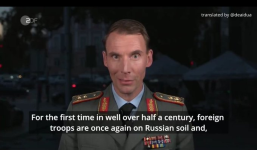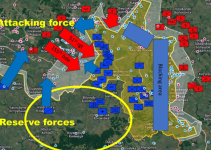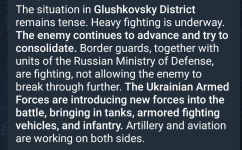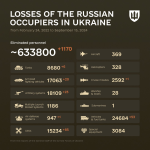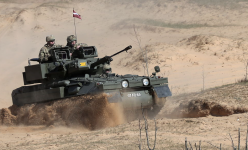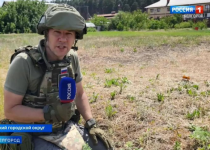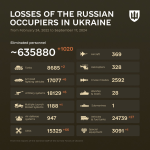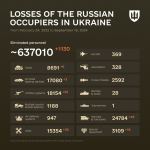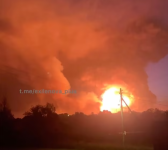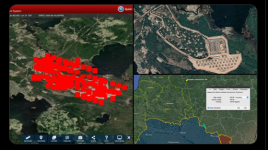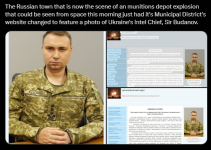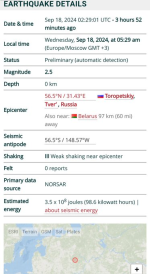ChloeTzang
Literotica Guru
- Joined
- Apr 14, 2015
- Posts
- 10,999
Ukrainian forces finally managed to escalate the pressure in the Kursk Oblast to such an extent that the Russians were forced to sacrifice their Pokrovsk offensive and redeploy their most critical reserves to the north. By disrupting the biggest Russian offensive operation, on which Russians staked everything, the Ukrainian Kursk offensive is proving to be a strategic success. The Russian command has been gradually redeploying troops to bolster their defenses in Kursk, forces initially intended to support the offensive in Pokrovsk. This shift is crucial because drawing Russian forces away from Pokrovsk appears to have been the primary Ukrainian strategic objective and the aim of the Kursk offensive. Consequently, the Russian command sought to avoid deploying reserves from Pokrovsk at all costs. They redeployed troops from various parts of the frontline, including Chasiv Yar, but avoided drawing from Pokrovsk to maintain their momentum.
However, the worsening situation in and around Kurenevo, coupled with the risk of encirclement by Ukrainian forces, which would open a road to Glushkovo, necessitated further redeployment of forces and equipment to alleviate the pressure. That is why the Russians were eventually compelled to redeploy troops from Pokrovsk as well. According to Russian sources, this included elements from the 15th Motorized Rifle Brigade and the 1st Sloviansk Brigade. Ukrainian Commander-in-Chief Oleksandr Syrskyi stated that the Russians redeployed up to 30,000 troops from unspecified directions to Kursk. Meanwhile, President Zelensky stated that there are up to 60,000 Russian troops across the northeastern border from Bryansk to Kharkiv, including Kursk. Syrskyi also noted that the number of troops, initially at 30,000, is expected to rise as the Russians plan further counteroffensive efforts in the Kursk Oblast.
By forcing the Russians to deploy a significant number of reserves to Kursk, the Ukrainian command was able to alter the war’s trajectory. The diversion of most Russian reserves to the Kursk Oblast led to a slowdown in the Pokrovsk offensive due to inadequate reserves, which were unable to replace heavy losses and maintain the previous operational tempo. Therefore, Ukrainian forces managed to stabilize the Pokrovsk front and even begin pushing the Russians back around Niu York and Selydove, once the most critical and dynamic parts of the front.
But this was just the beginning of the bad news for the Russians. The large deployment of Russian reserves to Kursk forced the Russian Northern Command to quickly establish logistics hubs, including ammunition and fuel depots, in Belgorod and Voronezh to support the counterattacks. Ukrainian military intelligence tracked the increased movement of Russian forces and identified the location of an ammunition depot in the town of Soldatskoye in the Voronezh Oblast, where they conducted an effective strike. Footage from the town shows massive fires and smoke resulting from the large scale detonations of Russian ammunition and equipment stored there. Ukrainian drone strikes against the Russian rear and logistics hubs involved in the Kursk operation are expected to further prolong the Russian counterattacks, which are predicted to continue for months.
Overall, the forced redeployment of Russian reserves from Pokrovsk to Kursk highlights the effectiveness of Ukraine’s strategic planning and the ability and perseverance to make such plans succeed. The successful exploitation of key Russian vulnerabilities allowed Ukrainians to completely alter the dynamics of the battles in the Ukrainian Theatre of War, challenge the battlefield initiative, and impose their own rules of engagement.
Slava Ukraini
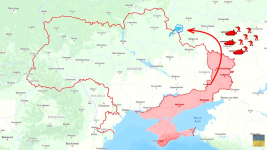
However, the worsening situation in and around Kurenevo, coupled with the risk of encirclement by Ukrainian forces, which would open a road to Glushkovo, necessitated further redeployment of forces and equipment to alleviate the pressure. That is why the Russians were eventually compelled to redeploy troops from Pokrovsk as well. According to Russian sources, this included elements from the 15th Motorized Rifle Brigade and the 1st Sloviansk Brigade. Ukrainian Commander-in-Chief Oleksandr Syrskyi stated that the Russians redeployed up to 30,000 troops from unspecified directions to Kursk. Meanwhile, President Zelensky stated that there are up to 60,000 Russian troops across the northeastern border from Bryansk to Kharkiv, including Kursk. Syrskyi also noted that the number of troops, initially at 30,000, is expected to rise as the Russians plan further counteroffensive efforts in the Kursk Oblast.
By forcing the Russians to deploy a significant number of reserves to Kursk, the Ukrainian command was able to alter the war’s trajectory. The diversion of most Russian reserves to the Kursk Oblast led to a slowdown in the Pokrovsk offensive due to inadequate reserves, which were unable to replace heavy losses and maintain the previous operational tempo. Therefore, Ukrainian forces managed to stabilize the Pokrovsk front and even begin pushing the Russians back around Niu York and Selydove, once the most critical and dynamic parts of the front.
But this was just the beginning of the bad news for the Russians. The large deployment of Russian reserves to Kursk forced the Russian Northern Command to quickly establish logistics hubs, including ammunition and fuel depots, in Belgorod and Voronezh to support the counterattacks. Ukrainian military intelligence tracked the increased movement of Russian forces and identified the location of an ammunition depot in the town of Soldatskoye in the Voronezh Oblast, where they conducted an effective strike. Footage from the town shows massive fires and smoke resulting from the large scale detonations of Russian ammunition and equipment stored there. Ukrainian drone strikes against the Russian rear and logistics hubs involved in the Kursk operation are expected to further prolong the Russian counterattacks, which are predicted to continue for months.
Overall, the forced redeployment of Russian reserves from Pokrovsk to Kursk highlights the effectiveness of Ukraine’s strategic planning and the ability and perseverance to make such plans succeed. The successful exploitation of key Russian vulnerabilities allowed Ukrainians to completely alter the dynamics of the battles in the Ukrainian Theatre of War, challenge the battlefield initiative, and impose their own rules of engagement.
Slava Ukraini

